The Interactive Foot and Ankle

| Forefoot |
|
|
| Metatarsals |
|
More significant fractures can be due to crushing injuries of the foot and can also be associated with significant midfoot ligament damage. |
| Midfoot |
|
|
| Mallet toe |
|
|
| Bunionette |
|
|
| Heel Pain |
|
Other causes of pain in this area are stress fractures, however this is quite rare. Severe falls onto the heel can result in fracture which may require surgery if they are significantly crushed. |
| Achilles and Heel |
|
|
| Big toe |
|
Pain around the tip of the big toe is often caused by an ingrown toenail. This can become infected and requires treatment with antibiotics or occasionally surgery to stop it recurring. Other causes of pain include arthritis in the inter-phalangeal joint which is just adjacent to the nail. |
| Lesser toes |
|
Like hammer toes, mallet toe deformities can result in pressure on the tip of the toe causing pain and occasionally affect the toenail. LIke for hammer toes, surgery can correct such deformities if non-operative measures are unsuccessful. Pain between the toes can result from corns caused by crowding of the toes in conditions such as bunions or arthritis. |
| Forefoot |
|
|
| Outside of ankle |
|
|
| Outside of the foot |
|
|
| Front of the ankle |
|
|
| Midfoot and inside of ankle |
|
Pain on the inside of the ankle is most commonly caused by inflammation or wear-and-tear of the tibialis posterior tendon. Over time this can cause the foot to flatten out and sometimes lead to arthritis. Commonly, treatment with custom SOFT full length orthotics can help with the pain, however some patient occasionally require surgery. Other causes of pain on the inside of the foot arthritis and inflammation of the tibialis anterior tendon. |
| Outside of ankle |
|
|
| Inside of ankle |
|
|
| Back of heel and Achilles |
|
|
| Toe pain |
|
|
| Big toe pain |
|
|
| Bunion pain |
|
|
 Call for an Appointment
Call for an Appointment 







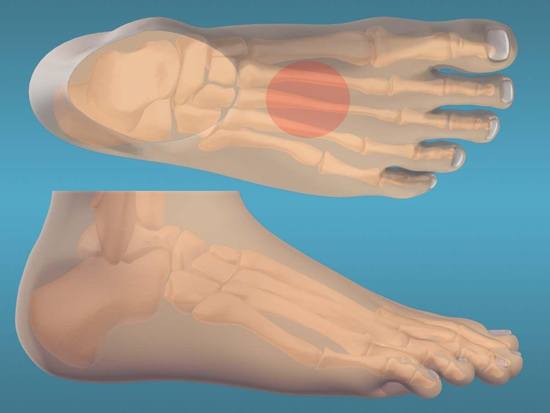
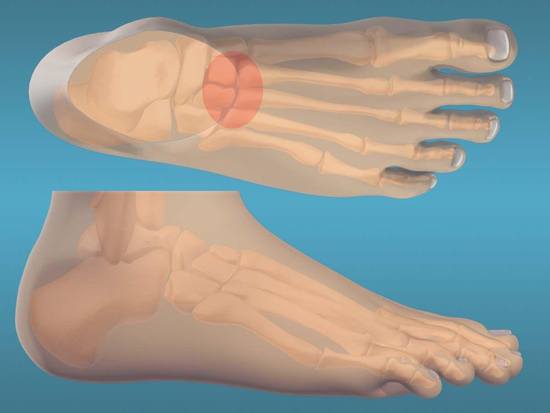
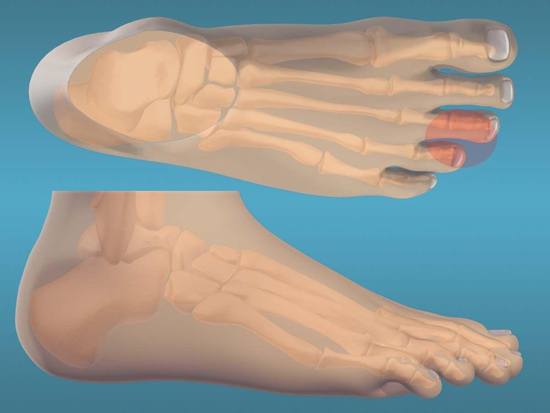




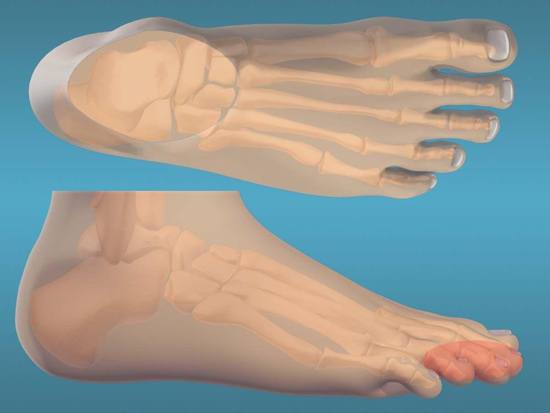
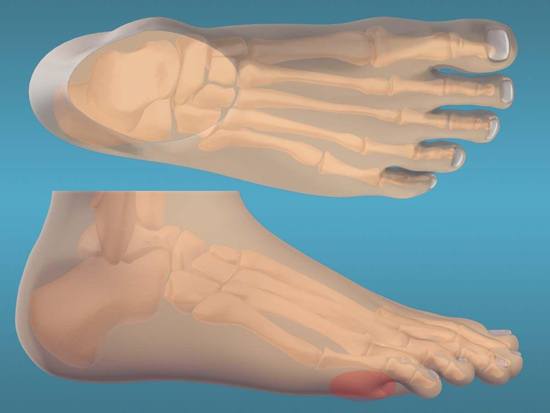
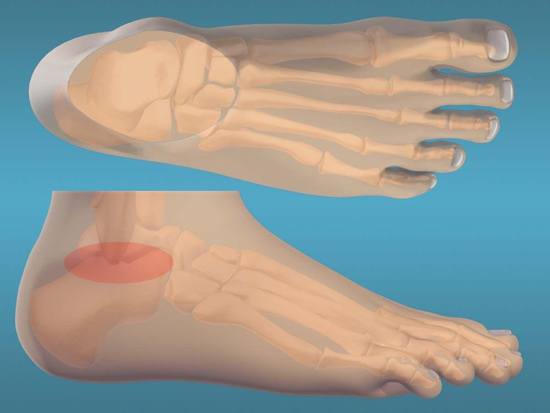
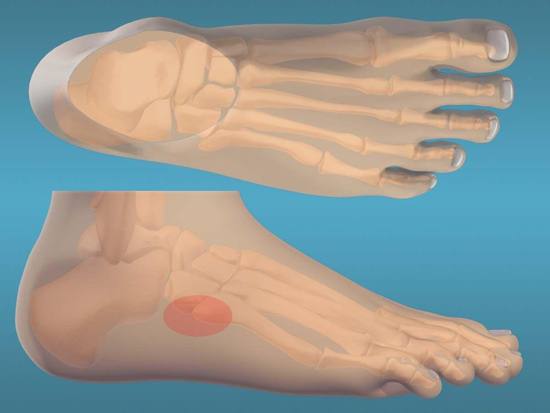

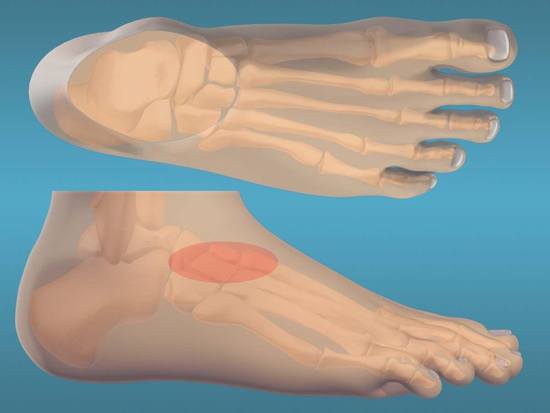
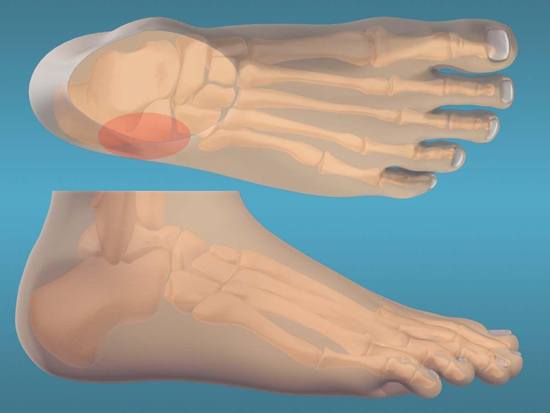

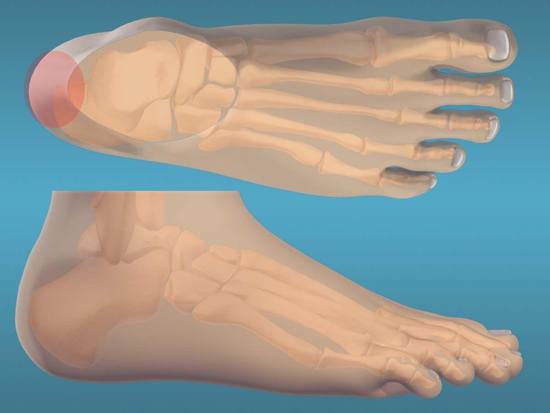

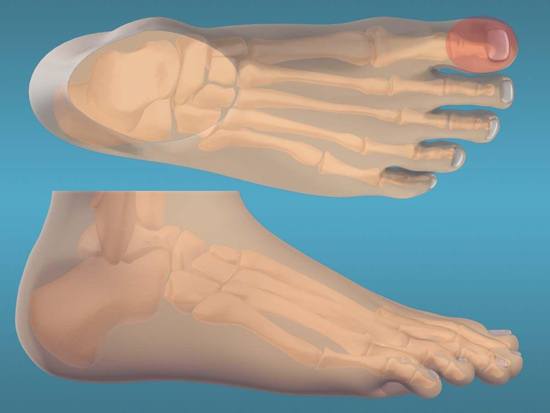
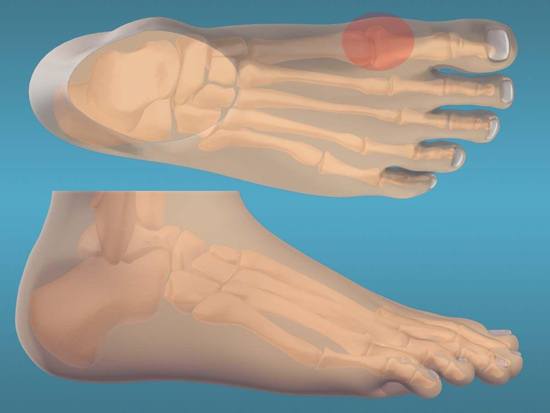
 Pain in the front part of the foot can be the result of a number of conditions. Pain underneath, on the balls of the foot (
Pain in the front part of the foot can be the result of a number of conditions. Pain underneath, on the balls of the foot ( Pain over the metatarsals is most commonly due to stress fractures or trauma. Stress fractures occur for many reasons, such as stiff and arthritic nearby joints, foot deformities or overuse. The most common location for a stress fracture is the second metatarsal. Stress fractures are often not seen on X-rays initially and management does NOT usually require surgery.
Pain over the metatarsals is most commonly due to stress fractures or trauma. Stress fractures occur for many reasons, such as stiff and arthritic nearby joints, foot deformities or overuse. The most common location for a stress fracture is the second metatarsal. Stress fractures are often not seen on X-rays initially and management does NOT usually require surgery. Pain in this region is often caused by arthritis of the midfoot joints. Deep pain can be caused by the irritation from the arthritic joints, however many patients find the prominent spurs on the top of the foot uncomfortable in closed shoes (or from the strap in sandals). Treatment can be
Pain in this region is often caused by arthritis of the midfoot joints. Deep pain can be caused by the irritation from the arthritic joints, however many patients find the prominent spurs on the top of the foot uncomfortable in closed shoes (or from the strap in sandals). Treatment can be  Like hammer toes, mallet toe deformities can result in pressure on the tip of the toe causing pain and occasionally affect the toenail. LIke for
Like hammer toes, mallet toe deformities can result in pressure on the tip of the toe causing pain and occasionally affect the toenail. LIke for  A bunionette (or Tailor’s Bunion) describes a bony bump or prominence at the base of the little toe. Like bunions of the big toe, the
A bunionette (or Tailor’s Bunion) describes a bony bump or prominence at the base of the little toe. Like bunions of the big toe, the  The most common cause of heel pain (on the sole of the foot) is
The most common cause of heel pain (on the sole of the foot) is 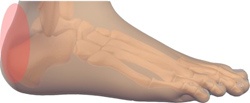 Pain over the back of the heel is most commonly caused by wear and tear of the achilles tendon. Inflammation can occur within the achilles tendon itself or at the place where the tendon inserts into the heel bone (often resulting in a large tender bump). Non-operative management with stretches and a heel lift are often helpful in mild cases.
Pain over the back of the heel is most commonly caused by wear and tear of the achilles tendon. Inflammation can occur within the achilles tendon itself or at the place where the tendon inserts into the heel bone (often resulting in a large tender bump). Non-operative management with stretches and a heel lift are often helpful in mild cases. 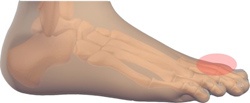 Pain around the base of the big toe is commonly caused by arthritis in the joint (
Pain around the base of the big toe is commonly caused by arthritis in the joint (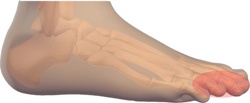 Pain in the toes, especially the second, can be the result of pregressive deformities such as a
Pain in the toes, especially the second, can be the result of pregressive deformities such as a  Pain in the front part of the foot can be the result of a number of conditions. Pain underneath, on the balls of the foot (
Pain in the front part of the foot can be the result of a number of conditions. Pain underneath, on the balls of the foot (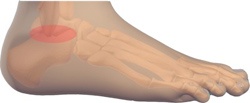 Pain on the outside of the ankle is often caused by
Pain on the outside of the ankle is often caused by 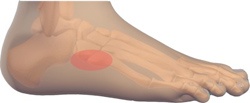 Pain over the side of the foot, specifically near the base of the fifth metatarsal/toe is commonly caused by a fracture of the metatarsal or wear-and-tear of the
Pain over the side of the foot, specifically near the base of the fifth metatarsal/toe is commonly caused by a fracture of the metatarsal or wear-and-tear of the 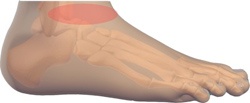 Pain at the front of the ankle is commonly caused by previous
Pain at the front of the ankle is commonly caused by previous  Pain in this region is often caused by arthritis of the midfoot joints. Deep pain can be caused by the irritation from the arthritic joints, however many patients find the prominent spurs on the top of the foot uncomfortable in closed shoes (or from the strap in sandals). Treatment can be
Pain in this region is often caused by arthritis of the midfoot joints. Deep pain can be caused by the irritation from the arthritic joints, however many patients find the prominent spurs on the top of the foot uncomfortable in closed shoes (or from the strap in sandals). Treatment can be  Pain on the outside of the ankle is often caused by
Pain on the outside of the ankle is often caused by  Pain on the inside of the ankle is most commonly caused by inflammation or wear-and-tear of the
Pain on the inside of the ankle is most commonly caused by inflammation or wear-and-tear of the  Pain over the back of the heel is most commonly caused by wear and tear of the achilles tendon. Inflammation can occur within the achilles tendon itself or at the place where the tendon inserts into the heel bone (often resulting in a large tender bump). Non-operative management with stretches and a heel lift are often helpful in mild cases.
Pain over the back of the heel is most commonly caused by wear and tear of the achilles tendon. Inflammation can occur within the achilles tendon itself or at the place where the tendon inserts into the heel bone (often resulting in a large tender bump). Non-operative management with stretches and a heel lift are often helpful in mild cases.  Pain in the toes, especially the second, can be the result of pregressive deformities such as a
Pain in the toes, especially the second, can be the result of pregressive deformities such as a  Pain around the tip of the big toe is often caused by an ingrown toenail. This can become infected and requires treatment with antibiotics or occasionally surgery to stop it recurring. Other causes of pain include arthritis in the inter-phalangeal joint which is just adjacent to the nail.
Pain around the tip of the big toe is often caused by an ingrown toenail. This can become infected and requires treatment with antibiotics or occasionally surgery to stop it recurring. Other causes of pain include arthritis in the inter-phalangeal joint which is just adjacent to the nail. Pain around the base of the big toe is commonly caused by arthritis in the joint hallux rigidus or because the toe turns towards the second toe and a prominent bump rubs on shoes. Other causes of pain, especially underneath the ball of the big toe, include pain from the sesmoid bones.
Pain around the base of the big toe is commonly caused by arthritis in the joint hallux rigidus or because the toe turns towards the second toe and a prominent bump rubs on shoes. Other causes of pain, especially underneath the ball of the big toe, include pain from the sesmoid bones.